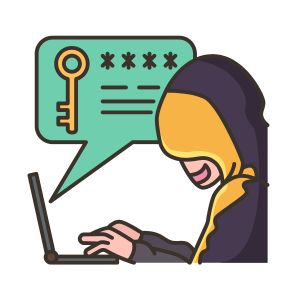Crypto is filled with opportunity — but it’s also filled with traps.
With new traders entering the market every day, scammers are getting smarter, faster, and more sophisticated. And in Web3, there’s no “undo” button if you make a mistake.
One wrong click, and your wallet could be drained in seconds.
En este post, lo desglosaremos:
- ✅ The most common scams and phishing attacks in crypto
- ✅ Real-world examples of how people get tricked
- ✅ How to protect your assets and identity
- ✅ Tools and habits that can keep you safe
- ✅ What we teach at EPIQ to avoid costly security mistakes
🧠 Why Web3 Is Prime for Scams
Unlike traditional finance, you are the bank in crypto.
There are no fraud departments, no chargebacks, no customer support if you get drained.
This gives scammers two huge advantages:
- Many users don’t understand how wallets or approvals work
- Everything is pseudonymous and permissionless, so it’s easy to create fake platforms or identities
🔥 The Most Common Crypto Scams (And How They Work)

🧟 1. Fake Airdrop or Claim Links (Phishing)
You’re told you qualify for a free airdrop. You click the site, connect your wallet…
Then it asks for a transaction.
BOOM — your wallet is drained.
How to protect yourself:
- Never connect to random claim sites
- Double-check project URLs (many fakes use misspellings)
- Never sign anything unless you fully understand what it does
🧪 2. Fake Token Listings on DEXs
New tokens launch. Scammers create copycats with the same name or ticker. You buy thinking it’s legit — but you can’t sell it.
These are called honeypots.
How to protect yourself:
- Use token scanners like GoPlus o DEXTools
- Only buy from official links or verified pairs
- Always check contract addresses
🧻 3. Wallet Drainer Scripts Hidden in Mint or Connect Buttons
Some sites include malicious code in their “connect wallet” or “mint now” buttons. The site looks legit — but the smart contract hides permissions to drain all your assets.
How to protect yourself:
- Use a burner wallet for new or risky mints
- Read contracts using tools like Etherscan
- Never approve “unlimited spend” unless necessary
📬 4. Impersonators in Discord, Telegram, or Twitter DMs
Scammers will message you pretending to be support, mods, or influencers offering “help.” They’ll ask for your seed phrase or link you to fake sites.
How to protect yourself:
- Never give out your seed phrase. Ever.
- Turn off Discord DMs in server settings
- Always verify team members by their profile and server roles
🧩 5. Drainer Contracts via Fake NFT Mints or Tools
These are smart contracts designed to request dangerous permissions under the guise of being a “tool,” “free mint,” or “wallet upgrade.”
Once signed, they can:
- Transfer out NFTs
- Pull tokens
- Assign unlimited approvals
How to protect yourself:
- Revoke approvals regularly
- Use hardware wallets for high-value assets
- Treat every transaction like a potential scam — read before signing
🔓 6. Seed Phrase Theft via Fake Wallets or Recovery Sites
Some sites or browser extensions pretend to be MetaMask, Phantom, or Trust Wallet — then ask you to “recover” your wallet using your seed phrase.
If you enter your phrase — it’s over.
How to protect yourself:
- Only download wallets from official sources
- Use cold storage for long-term holdings
- Never enter your seed phrase anywhere except your actual wallet recovery interface
🛡️ 10 Tips to Stay Safe in Crypto
- Use a hardware wallet for long-term storage
- Don’t connect your wallet to unknown dApps
- Bookmark official sites and double-check links
- Never rush when transacting — scammers prey on urgency
- Split your wallets: trading wallet, mint wallet, cold wallet
- Use Revoke.cash regularly to remove old token approvals
- Ignore all DMs on Discord and Telegram
- Don’t use Google ads to find project links — scammers buy ads
- Confirm token contracts before buying on DEXs
- Learn how to read transactions before signing
🧠 What We Teach at EPIQ to Avoid These Traps
En Parqué EPIQ, safety is part of our trading system.
We teach members:
✅ How to use wallets properly
✅ How to identify phishing links and fake tokens
✅ How to spot approval risks in smart contracts
✅ How to manage multiple wallets with purpose
✅ How to DYOR before clicking anything
And we break it all down step by step inside the Academy and during weekly live sessions — so you don’t have to learn the hard way.
🎯 Want to Trade with Confidence (and Keep What You Earn)?
Don’t let a single scam wipe out your portfolio.
En Parqué EPIQte damos:
✅ A full trading education — including security
✅ Real-time community alerts when scams trend
✅ Tools and dashboards to evaluate token safety
✅ Live coaching and tutorials for wallet security, staking, DEX use & more
🎯 Empieza ahora tu prueba gratuita de 3 días → epiqtradingfloor.com
Trade smart. Stay safe. Never fall for fake gains.
⚠️ Descargo de responsabilidad:
This blog is for educational purposes only and does not constitute financial advice. Always double-check links, never share your seed phrase, and trade responsibly.










Respuestas